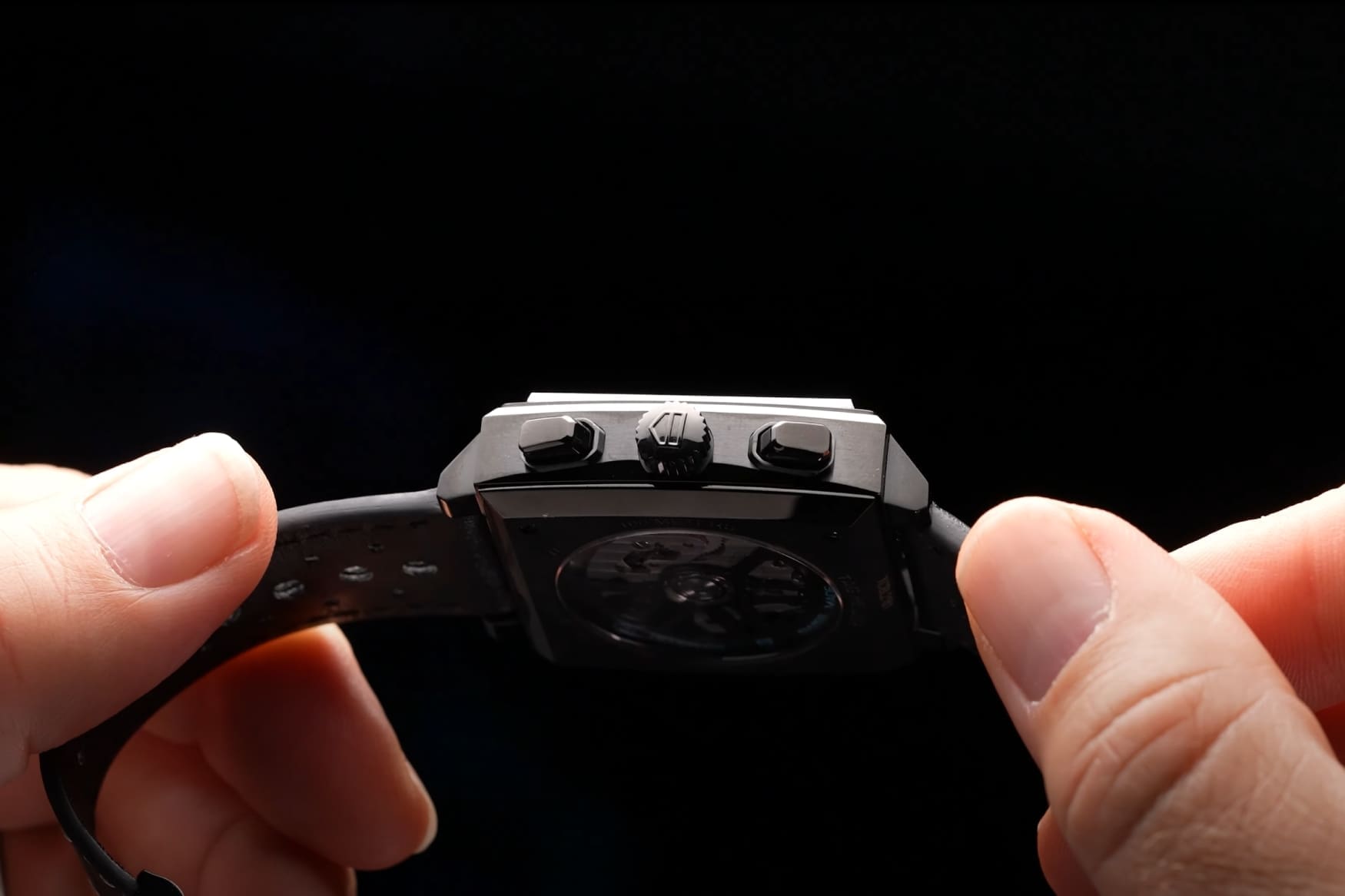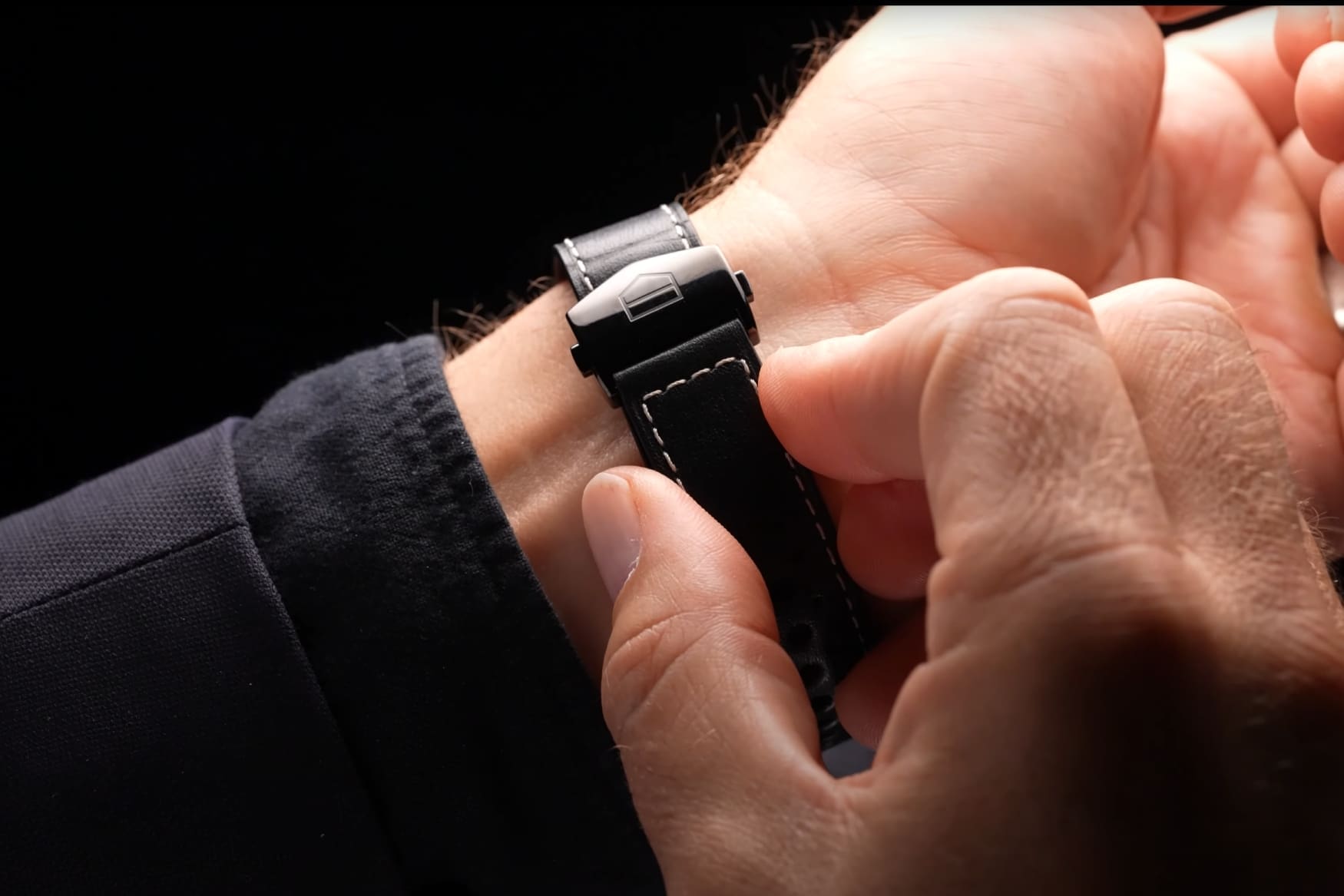Fire Signs: Aries, Leo, Sagittarius - fire signs

The dial is where the Night Driver sets itself apart from other Monacos. In fact, it’s where the watch gets its name. At first glance, the dial has a cool, greyscale monochrome look by daylight, with an anthracite inner dial, set off by light grey opaline in the outer corners and the two squared-off subdials. Dial hardware is all black gold-plate, including the indices, hour, minute, and subdial hands. A light grey chrono hand sits in the center, with a date window at six.
EDIT: I think I may have damaged the fixture somewhat. There's another bulb that I removed, correctly, by twisting it and taking it out vs. how I took down the original bulb. The way it aligned made installing a new bulb go in the way it should with an easy insertion and rotation. So I guess I'll see if somehow to fix the actual fixture itself.
Where do you get such a key? No idea but I just have this nagging feeling like I've SEEN one somewhere. Where have I seen that key???
I think the black ring inside the bulb socket is a kind of "door". It's unusual. But I think it rotates with the blub, and currently it is incorrectly rotated to the "closed" position.
The Monaco lineup continues to expand, and with the dual personality of the dial, along with the blacked-out Grade 5 titanium case, this one looks like it’s ready for the winner’s circle. The monochromatic vibe is cool and understated, but when it’s lights out, all bets are off when that bright blue glow hits.
Reminder: Answers generated by artificial intelligence tools are not allowed on Home Improvement Stack Exchange. Learn more
The strap goes for a vintage feel, in perforated black calfskin that features contrast stitching. Like a pair of well-crafted driving gloves, it looks the part of a race-ready accessory, and fastens with a black DLC titanium folding clasp that matches the case.

Your particular lampholder ("tombstone") has a rotating plastic guard. It's designed to rotate with the tube, but somehow it has found itself in the theoretically impossible position where it is horizontal while the bulb is removed.
YouTube videos say to install it with the bulb metal prongs perpendicular to the floor, and then you kind of "rotate" it in place. I don't think this is how my install works for some reason. I can't figure it out and can't seem to get it to click in place.
The original content on TIME+TIDE Watches is copyright protected. Please email us before re-posting our content elsewhere. When sharing our images on Pinterest or Instagram please use the credit 'via TIME+TIDE' THANK YOU.
If either of those is too difficult, or if step 1 fails, you could take the fixture apart and look for replacement parts but my suggestion would be to replace it entirely with an LED fixture.
TAG Heuer has been synonymous with motorsport for decades, and they’re back with an eye-popping new edition of their classic Monaco chronograph. The Monaco is one of the cornerstones of the brand’s legendary foundation, and has been since it burst into the spotlight way back in 1969, as one of the very first automatic chronographs the world had ever seen. By the mid-’70s, due to changing tastes and the dominance of quartz watches in the marketplace, the model disappeared from Heuer’s catalogue. After Heuer evolved into TAG Heuer, the Monaco was brought back in the late ‘90s, and the iconic model has evolved in the ensuing years. The new Night Driver is the latest iteration, and it brings with it a refined monochromatic look, but one with a hidden twist. In fact, you could say the Night Driver has a bit of a split personality after dark. Let’s put on the night vision goggles and get a closer look.
Kill the lights, however, and you’ll see why TAG Heuer calls it the Night Driver. The outer dial, subdials, hour markers, and hands glow with the intensity of a searing blue flame, due to the generous application of Super-LumiNova. The glow is so intense, TAG Heuer claims it’ll stay legible hours after charging. This has to be one of the most effective uses of lume on a chrono dial I’ve seen, and it reminds me of the intensity of the infamous full lume dial of TAG Heuer’s Aquaracer Night Diver.
So, the dial is obviously the star of this show, but the rest of this Monaco is equally impressive, including the movement, which can be fully appreciated through the sapphire of the visible caseback. It’s the Calibre Heuer 02, an automatic column wheel chrono with 33 jewels, a beat rate of 4Hz, and an impressive 80-hour power reserve. As far as decoration, it’s got Geneva striping, a matching blue column wheel, and a black oscillating weight that resembles an alloy racing wheel, which gets engraving in a complementary blue that recalls the light show going on up front.
The Night Driver keeps the form factor of modern Monacos, with the square case sporting the crown and pushers on the right, as opposed to the left hand crown of the original and vintage reissues. But something different is going on here, starting with the case material, now in lightweight grade 5 titanium, which perfectly suits the race-inspired aesthetic.
The TAG Heuer Monaco Chronograph Night Driver is available now as a limited edition of 600 pieces. Price: A$13,800, US$9,550
The case, crown, and pushers are all rendered in black DLC, and there’s a nice mix of fine brushing and polishing that brings some real dimensionality to the unconventional shape. The diameter is a reasonable 39mm, with a case height of 14.7mm and lug-to-lug of 47.4mm. However, since it’s a square case, it’s going to wear larger than a round one. The dial is protected by a domed and beveled square sapphire crystal, and a round sapphire caseback protects the movement while offering a clear view. Water resistance is listed at 100 metres – impressive for a chrono without screw-down pushers.
Stack Exchange network consists of 183 Q&A communities including Stack Overflow, the largest, most trusted online community for developers to learn, share their knowledge, and build their careers.
I was told elsewhere to try to spin the black part. I tried manually spinning the black part using my fingernails. It's not budging, either counter clockwise or clockwise. Applied a decent amount of pressure, even trying stuff like pushing down slightly like it's a child proof cap, and still got nothing with it turning. Do I need an appreciable amount of force, or should it be easier? Like would I need pliers to grab a good hold of it?
That's not going to happen, you need a special "key" for that. It needs to be round, have two pins 1/2” apart sticking out of its ends, the pins are 1/4” long. Insert that key horizontally, turn 90 degrees and Bob's your uncle.
Do I just have to apply enough pressure and shove the two prongs of the light bulb in between the space of the thin gold filament and center white portion of the fixture? The 2 prongs I'm certain should be parallel with the floor. I'm nervous that with the pressure I'm currently applying, it's not right and I'm going to force break something. When I do lightly touch it this way, the light comes on in the bulb briefly. There is no "insert and twist" mechanism I can see here that every YouTube video mentions.
The "tombstone" (socket for the bulb) has partly come away from the fixture, in the top left corner. Depending on how easily the fixture can be disassembled you may be able to put it back.










 13322766566
13322766566